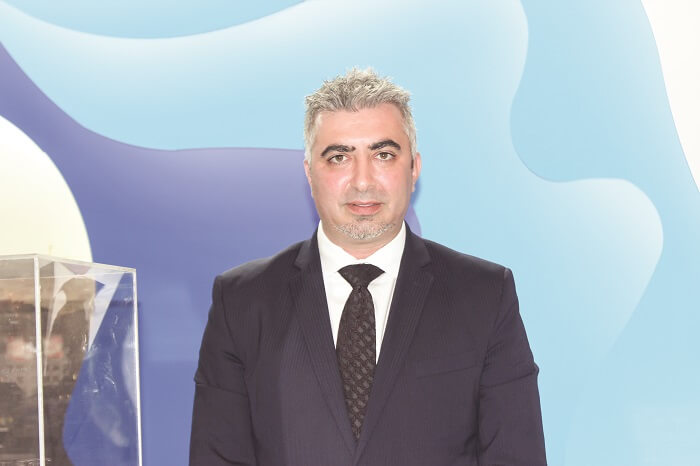A Booming Sector: Robban Assafina explores the recent developments in the Turkish Tugboat building industry
The Turkish shipbuilding industry is currently experiencing a period of unprecedented growth, fueled by technological advancements, increased global demand, and a commitment to environmental sustainability. In this report, Robban Assafina will explore the recent developments in the Turkish shipbuilding sector, particularly focusing on its impact on the tugboat market, major markets for Turkish tugboats, challenges in regulatory compliance, competition dynamics, shipyard capacity, and staff training initiatives.
Turkish tugboat industry experts, whom we had interviewed, underscore the correlation between the growth of the shipbuilding sector and the demand for tugboats, highlighting the essential role tugboats play in supporting maritime operations.
Muhammet Gökhan, General Manager at Lykia Marine Group offers a historical overview of the Turkish shipbuilding industry, outlining its evolution over the years and attributing success to various factors: “The Turkish shipbuilding industry goes back to the 2000’s; There were only 35 shipyards operating at the time and these figures increased to around 60 yards in 2010 and around 85 yards in early 2020. Despite the global economic crises, the Turkish shipbuilding sector was improving.”

Gökhan identifies various factors contributing to the success of the Turkish shipbuilding industry, including quality standards, modernization, competitive pricing, effective marketing, education, and government support, while also stressing the responsiveness of Turkish yards to client needs and global market trends.
Perspective on Turkish Shipbuilding
Industry
The developments in the Turkish shipbuilding industry and world demand have led to a sharp increase in production volume and expanded the market range.
Ferhat Acuner, Board Member and General Manager at Navtek, emphasizes the recent advancements in technology and capabilities within the Turkish shipbuilding industry, particularly highlighting the addition of zero-emission tugboats and the factors contributing to market expansion.

“Previously, Turkey was a booming builder country for tugboats but now also design & developing zero emissions tugboats have added into the capabilities. In the Turkish shipbuilding industry, recent noiseless and environmentally friendly technological developments such as electrification, experiences, high quality of workmanship, low costs, and short project delivery times thanks to the spacious facilities, have extremely expanded the market range. Additionally, increasing the number of new-building and repaired ships require the tugboats to perform their towing operations. Especially these two factors level up with the tugboat market in Turkey.”
Discussing the proactive response of Turkish shipyards to increased demand, focusing on capacity enhancement, Melis Üçüncü, Sales Director at Med Marine, explains that the company has set a strategy that aligns with the booming shipbuilding sector which positively impacts the tugboat market in Turkey. In response to the market developments, Med Marine has ramped up its production capacity and streamlined processes to enhance efficiency.

“Given the steady increase in vessel traffic, tonnage, terminal and port investments, there is a parallel demand for tugboats, as they play a vital role in assisting the navigation and maneuvering of large vessels.
Our commitment to increased production not only caters to the growing shipbuilding sector but also bolsters the tugboat market, as our efficient production ensures a steady supply of these essential vessels. This synchronized growth across the shipbuilding and tugboat industries allows us to meet the demands for both sectors, further contributing to our nation’s maritime capabilities and global competitiveness.”
In a statistical data perspective, Gary Dockerty, Sales Director – Middle East and Africa at Sanmar Shipyards, provides statistical evidence of Turkey's growing presence in the global tugboat production, indicating a direct link between the increase in Turkish shipyard activities and the rise in global tugboat orders.

“According to reliable industry sources, more than 260 tugs were built worldwide in 2023 with Turkish shipyards accounting for around 35% of that production. Furthermore, over the last 12 months or so, Turkish shipyards have gained the most tugboat orders and contributed to the dominance of European shipyards, which represented around 40-50% of the total newbuilding contracts. If this trend continues, sources estimate that this translates into a compound annual growth rate (CAGR) of between 5-9% against a global order book of an estimated USD292m in 2022 to a forecast USD620m by 2031.”
Capacity
Over recent years, the shipbuilding capacity of Turkish shipyards saw significant growth and development. Üçüncü emphasizes Turkey's robust shipbuilding capacity, attributing it to the country's extensive coastline and strategic maritime location.
She explains that Turkish shipyards are continuously improving their technological capabilities to meet the increasing demand for ship construction and enhance production efficiency: “The shipbuilding capacity in Turkish shipyards is robust and continually evolving, and Turkey’s strategic maritime location has fueled significant growth in the shipbuilding sector. Consequently, Turkish shipyards are dedicated to advancing their technological capabilities to keep pace with the rising demand for ship construction and improve production efficiency.”
Capacity across Turkish shipyards has been increasing incrementally for some years to keep pace with a growing worldwide demand driven primarily by some key factors, says Dockerty, stating that the global expansion in maritime trade, the increase in ship size – especially in the container ship sector, the increase in offshore oil and gas activities, new port infrastructure developments, increasingly stringent environmental regulations as well as the general aging of the world fleet, have contributed to the increased capacity now seen right across the Turkish shipbuilding industry and specifically across the tug building landscape.
Translating this growth into numbers, Gökhan highlights an increase from 3.5 million DWT in 2010 to 4.65 million DWT in Turkish shipyards over the years, contributing considerably to the Turkish economy with over 1.7 billion US$ from new ship building. This also adds up to building very innovative vessels such as the world's largest live fish transport vessel, the first LNG-powered tugboat, the first hybrid ferry, the world's first battery and LNG-powered fishing vessel, the first energy conversion vessels. He also mentions that Turkey has become one of the few countries in the world to build its own military ships and is among the top three in the world in yacht building.
| Read More:Robban Assafina sheds the light on communication in #shipping and its significance in new contracts |
Markets
With this growth in sight, the Turkish tugboat industry is considered a thriving shipbuilding hub serving major markets such as Europe, South and Central America, the Middle East, North Africa, Australasia, and Canada. These regions are leading the adoption of lower and zero emission technologies in the shipping industry, driving demand for cleaner technology in tugboats. And since the Turkish tugboat industry has identified this appetite for cleaner technology as a strong driver for growth, and invested accordingly, Dockerty says it goes some way towards explaining the strength of these markets in the current climate.
He explains: “Decarbonisation has risen to the top of the agenda in the towage industry with tugs being delivered with batteries and electric or hybrid propulsion to cut emissions, including the adoption of alternative fuels. Sanmar Shipyards alone has delivered a total of five fully battery electric powered ElectRA series tugs for clients in North and South America and has a further two due for delivery to European owners in Q1 2024.”
From her point of view, Üçüncü says that the Turkish tugboat industry caters to a wide range of global markets, ensuring that geographical distance is not a limiting factor, as Turkish shipyards possess the capacity to adapt to diverse customer requirements.
This flexibility in manufacturing enables shipyards to reach clients across continents and offer tailor-made solutions to meet customer’s unique needs.
Competition
On the other hand, although Turkey has made remarkable strides in its shipbuilding sector over the past five years, propelling itself to become the world's fifth-largest shipbuilding country, the country faces formidable competition in the tugboat building sector.
According to the experts, key competitors include countries renowned for their maritime expertise, such as the Netherlands, as well as major players in shipbuilding like China, Korea, and Japan from the Far East.
Additionally, emerging contenders such as Vietnam, with its burgeoning shipbuilding industry, also contribute to the competitive landscape. In Europe, countries like Romania, Spain, and Italy also vie with Turkey in tugboat construction, each bringing its own strengths and capabilities to the market.
Despite Turkey's impressive advancements, our experts believe it must navigate a fiercely competitive environment shaped by factors such as labor costs, technological innovation, and market demands. Moving to the regulatory side of this report, it is true that staying in compliance with IMO Tier III regulations can present varying levels of challenges depending on factors such as vessel type, existing infrastructure, and available technologies. While initial challenges may exist, advancements in technology and industry adaptation have made complying with IMO Tier III regulations increasingly feasible, with some perspectives suggesting it has become more routine or manageable over time.
From Dockerty's perspective, it is initially challenging due to limited space for additional equipment, leading to a reassessment of design. He states that overcoming initial hurdles resulted in the integration of advanced technologies are becoming less of a barrier. With increasing orders for Tier III compliant tugs, integrating advanced technologies into design and operation became more routine.Facing this challenge is a common occurrence within the industry, as Üçüncü emphasizes the necessity of consistently monitoring global advancements and adjusting accordingly.
She highlights the importance of staying updated on technological advancements to incorporate emissions-reducing technologies like hybrid, electric, methanol, and fuel cell systems. In this aspect, she refers to specific designs from Med Marine such as the VoltRa series, which offers full electric and hybrid options, demonstrating a commitment to innovation and emission reduction.
However, meeting IMO Tier III requirements is not a significant issue for new building vessels, even for smaller ones, according to Gökhan, who believes that engine makers have invested significantly to provide designers with various options, facilitating compliance with Tier III regulations. He also acknowledges that some design work may be necessary to accommodate additional equipment such as Selective Catalytic Reduction (SCR) units and urea tanks.
Performance
Discussing the overall performance and efficiency of modern ship design, considering fuel consumption, durability, and environmental impact, Acuner emphasizes environmentally friendly designs as a top priority in modern ship design, with a strong focus on transitioning to electric propulsion and selecting sustainable energy systems to minimize environmental impact while optimizing overall performance and efficiency. He highlights several key factors in that matter:
“The aerodynamic hull design and professional structural analysis ensure low fuel consumption by reducing water resistance. The use of lightweight equipment and high-quality materials in ship designs can also help increase the overall performance and life of the ship. Automatic cruise control systems, wind forecasting technologies and intelligent power management systems can improve energy efficiency by optimizing ship navigation. Using more efficient and environmentally friendly engines can minimize environmental impact by reducing fuel consumption. All these are well known issues for developing new projects, but today the most important matter is environmentally friendly designs. To minimize environmental impact, the transition to electric propulsion is mandatory to reduce greenhouse gas emissions. In the future all propulsion systems’ prime movers shall be electric motors, for sure. The differences among the new systems shall be focused for electric on the energy systems: batteries, Hydrogen FCs, ammonia, or methanol burning gensets etc. for electric production.”
Training
When it comes to training, professionals in the tugboat industry, much like their counterparts in other fields, prioritize personal growth and professional development to enhance the skills of their team members. Acuner highlights that the expansion of the Turkish shipbuilding sector has demanded a larger workforce, resulting in increased quotas, instructors, and educational opportunities in vocational schools and universities over time. This focus on technological proficiency has subsequently facilitated a smoother employment process. On the same level, Dockerty emphasizes comprehensive training programs to develop skills in shipbuilding.
These programs cover traditional techniques and modern technology, leveraging simulators and VR for safe skill practice. On-the-job training and continuous learning are prioritized, with collaboration with industry partners to stay updated. Certification programs validate skills, while AI-driven gamification enhances engagement and behavioral changes in training.
Robban Assafina, Issue 90, Mar./ April 2024, Edition Story, pg. 73
| Read Here | |
 |
|




.jpg)


































